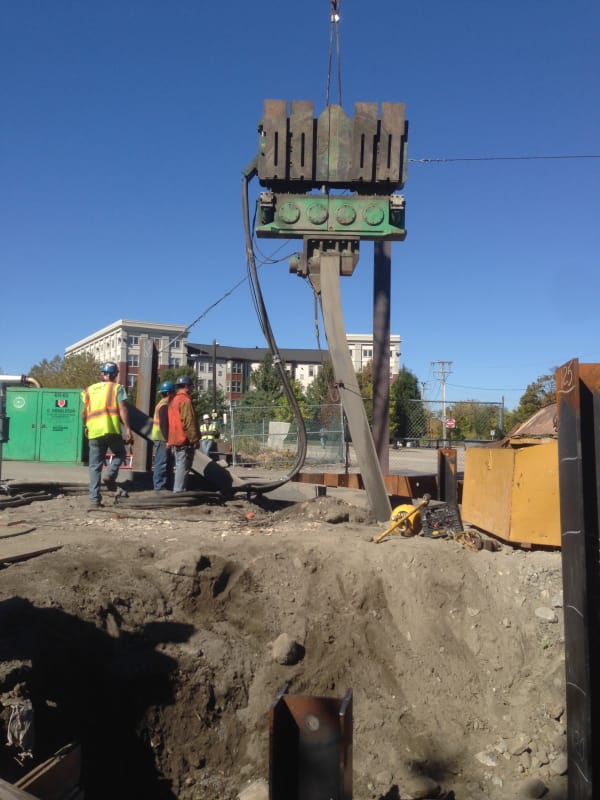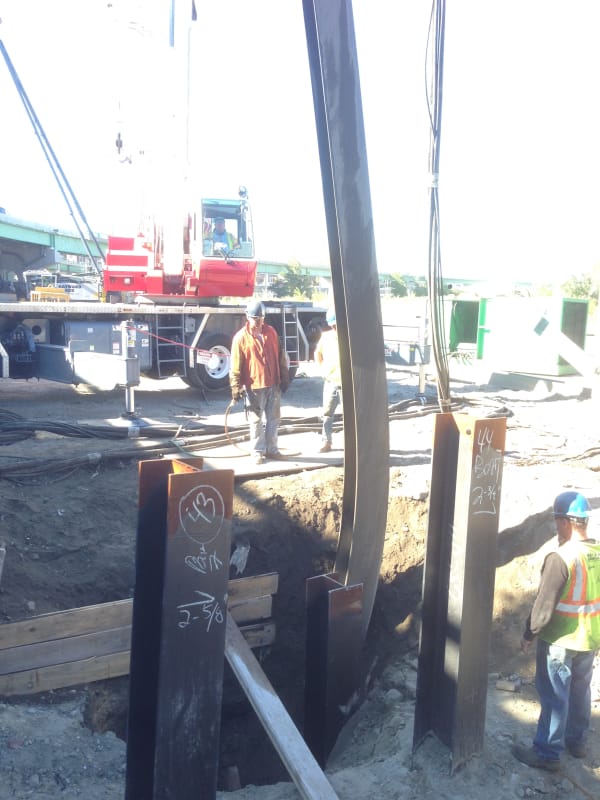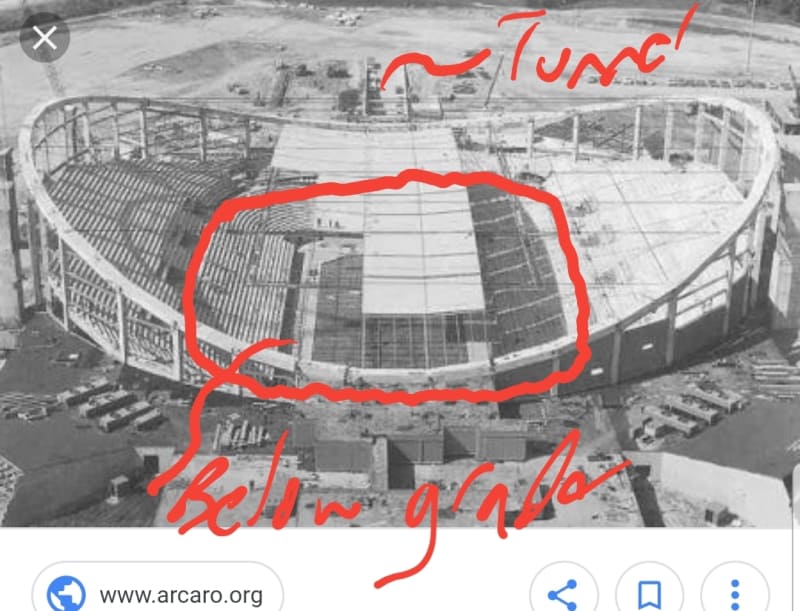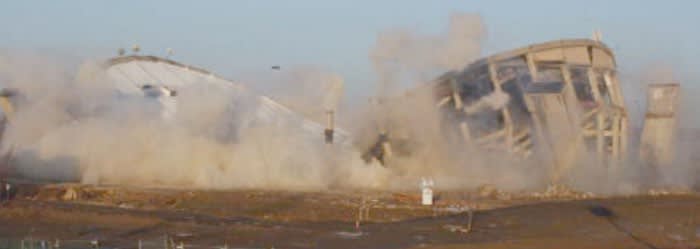Hello all,
I am currently working on a project that a large portion of the site falls within the footprint of an arena that was partially below grade to depths of approximately 40 feet.
The arena structure was reinforced/post tension concrete that was imploded and the removal of the debris is unknown. We do know the bleachers/finishes we removed and the interior was partially back filled without compaction. As of now we are completing electromagnetic and resistivity surveys to try to delineate buried debris along with hsa and air track borings. Preliminary borings do confirm shallow refusals around 30' below grade in this area of the site.
A few of the structures planned for development in this area will require deep foundations to support the proposed loads. Based on experience in this area, piles will need to penetrate beyond the rubble depth to achieve capacity.
I wanted to see if any one had any experience with deep foundations penetrating through reinforced concrete rubble.
As of now we are leaning towards predrilled holes utilizing an airtrack rig then recommending auger cast piles or belled caissons. Another thought was micropiles. I am not looking for design recommendations, just anyone with past experience with pile construction in "similar" subsurface conditions.
Happy holidays and a happy new year.
Thanks in advance
J
I am currently working on a project that a large portion of the site falls within the footprint of an arena that was partially below grade to depths of approximately 40 feet.
The arena structure was reinforced/post tension concrete that was imploded and the removal of the debris is unknown. We do know the bleachers/finishes we removed and the interior was partially back filled without compaction. As of now we are completing electromagnetic and resistivity surveys to try to delineate buried debris along with hsa and air track borings. Preliminary borings do confirm shallow refusals around 30' below grade in this area of the site.
A few of the structures planned for development in this area will require deep foundations to support the proposed loads. Based on experience in this area, piles will need to penetrate beyond the rubble depth to achieve capacity.
I wanted to see if any one had any experience with deep foundations penetrating through reinforced concrete rubble.
As of now we are leaning towards predrilled holes utilizing an airtrack rig then recommending auger cast piles or belled caissons. Another thought was micropiles. I am not looking for design recommendations, just anyone with past experience with pile construction in "similar" subsurface conditions.
Happy holidays and a happy new year.
Thanks in advance
J





![[idea] [idea] [idea]](/data/assets/smilies/idea.gif)